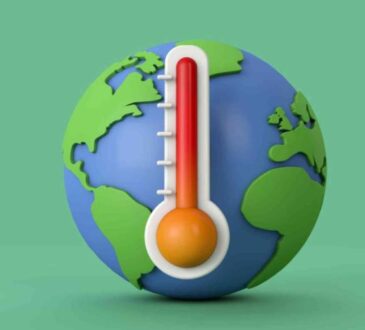Australia facing accelerated extreme climate events –
Australia must act now to mitigate rising land, sea and air temperatures and avoid more extreme weather events in coming decades.
That’s according to the latest State of the Climate report by Australia’s National Science Agency (CSIRO) that found Australia’s climate has warmed by an average of 1.47 ± 0.24 °C since national records began in 1910. Sea surface temperatures have increased by an average of 1.05 °C since 1900. This has led to an increase in the frequency of extreme heat events over land and sea.
The seventh biennial State of the Climate report draws on the latest national and international climate research, encompassing observations, analyses and future projections to describe year-to-year variability and longer-term changes in Australia’s climate.
Associated changes in weather and climate extremes—such as extreme heat, heavy rainfall and coastal inundation, fire weather and drought—have a large impact on the health and well being of our communities and ecosystems. These changes are happening at an increased pace—the past decade has seen record-breaking extremes leading to natural disasters that are exacerbated by anthropogenic (human-caused) climate change. These changes have a growing impact on the lives and livelihoods of all Australians.
Australia needs to plan for, and adapt to, the changing nature of climate risk now and in the decades ahead. The severity of impacts on Australians and our environment will depend on the speed at which global greenhouse gas emissions can be reduced.
Australia’s climate has warmed by an average of 1.47 ± 0.24 °C since national records began in 1910. Sea surface temperatures have increased by an average of 1.05 °C since 1900. This has led to an increase in the frequency of extreme heat events over land and sea.
There has been a decline of around 15 per cent in April to October rainfall in the southwest of Australia since 1970. Across the same region, May to July rainfall has seen the largest decrease, by around 19 per cent since 1970. In the south-east of Australia, there has been a decrease of around 10 per cent in April to October rainfall since the late 1990s.
There has been a decrease in streamflow at most gauges across Australia since 1975. Rainfall and streamflow have increased across parts of northern Australia since the 1970s.
There has been an increase in extreme fire weather, and a longer fire season, across large parts of the country since the 1950s. There has been a decrease in the number of tropical cyclones observed in the Australian region.
Snow depth, snow cover and number of snow days have decreased in alpine regions since the late 1950s.
Oceans around Australia are acidifying and have warmed by more than 1 °C since 1900, contributing to longer and more frequent marine heatwaves. Sea levels are rising around Australia, including more frequent extremes that are increasing the risk of inundation and damage to coastal infrastructure and communities.
In the coming decades, Australia will experience ongoing changes to its weather and climate. Australia is projected to experience:
Continued increase in air temperatures, more heat extremes and fewer cold extremes; Continued decrease, on average, in cool season rainfall across many regions of southern and eastern Australia which will likely lead to more time in drought but with ongoing climate variability that will give rise to short-duration heavy-rainfall events at a range of timescales.
Continued increase in the number of dangerous fire weather days and a longer fire season for southern and eastern Australia.
Further sea level rise and continued warming and acidification of the oceans around Australia; Increased and longer-lasting marine heatwaves that will affect marine environments, such as kelp forests, and increase the likelihood of more frequent and severe bleaching events in coral reefs around Australia, including the Great Barrier Reef and Ningaloo Reef.
Fewer tropical cyclones, but a greater proportion is projected to be of high intensity, with large variations from year to year.
Globally, concentrations of all the major long-lived greenhouse gases in the atmosphere continue to increase, with global annual mean carbon dioxide (CO2) concentrations reaching 414.4 parts per million (ppm) in 2021 and the CO2 equivalent (CO2-e) of all greenhouse gases reaching 516 ppm. These are the highest levels on Earth in at least two million years.




